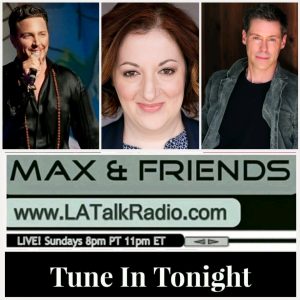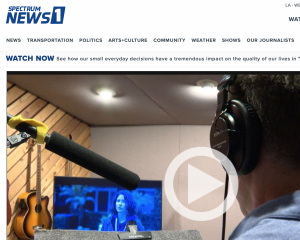Chatting with Roy Samuelson: Acclaimed Voice-over artist (Includes interview) – Digital Journal
On his future plans, he said, “In addition to providing the best narration I can for Audio Description audiences, I want to continue to learn even more about Audio Description process. I get more excited and passionate about this work, and how it’s growing.”
“I love learning from different perspectives, from blind and low vision audience members, to vendors navigating the studio and streaming services’ needs, to distribution, to the other narrators, and describers (the writers of audio description), and all the many other departments involved in this work. My focus remains on the win win win for everyone, and I take a lot of time exploring around what that can mean. I’ve enjoyed social media messaging on this, and learning from those who use it, or create it. This is a very exciting time,” he said.
He described Audio Description narration as like “listening to a sports radio announcer, giving the play by play of a game, for TV shows and movies.” “Blind and low vision audiences can get a special headset at the movie theaters (instead of amplifying the existing sound, it’s a special audio track in addition to what sighted audiences experience). For TV shows, there is a special SAP setting that adds this narration to network or cable television. Streaming services are really in the game too, they have just a few clicks or taps away to turn this feature on on their many platforms,” he said.
“As a narrator, I read a special Audio Description script. You hear my voice in between lines of dialogue mostly, so blind and low vision audiences can have access to the visuals that the producer or director intended. The scripts are tight, because of timing limitations, and do a great job of riding the emotional tone of the story in a way that doesn’t distract, but provides access to the important visual elements. From my experience as a narrator, I am provided the scripts and a minute later we are rolling. I’m watching and hearing the original production, and read along to special timed sections from the script,” he said.
This work is important to him for several reasons. “On the technical side, most of my voice-over training segues really well to this work. There’s acting involved, but as a narrator — I make sure that the emotional tone is consistent with the production, and I can’t do too little or too much because it can easily distract the audience. My goal is for the audience to fully immerse themselves in the story, and I want to make sure my voice is along for that ride,” he said.
He continued, “Another reason this work is important to me is one of my friends lost his sight between seasons of a TV show, and it’s because of Audio Description he was able to enjoy the seasons, and engage with others in ways he might not be able to without Audio Description. He was going through an incredibly challenging time of his life, and this little point of access gave him a little respite, and something to continue to talk about.”
“Finally, it’s important to me because of what the work means to others. I talk with blind and low vision audiences about Audio Description as much as I can, and this kind of inclusion, specifically with audio description on TV shows and movies, is teaching me more about disability and access in general. I’m honored to be learning from these conversations,” he said.
Each day, he is motivated to do the best work he can. “I can’t do it alone. I train and coach with varied experts, and learning is rewarding. I find that focusing on delivering something daily gives me satisfaction: that can be an audition, a job, or a new idea or concept that I recognize as useful or worthwhile. I love looking for those new moments, and I’m delighted by the discoveries,” he said.
On his proudest professional moments, he said, “I am most proud of accomplishments outside of credits in movies or TV shows.”
“I’ve found a lot of joy in the community — as a member of the TV Academy, the Emmys, I love connecting with fellow peers. In voice-over sessions, reconnecting with other talents, producers, directors, and sharing that smile or a conversation where we both feel a little bit better about something is a reward in itself. I’ve been able to grow my career in audio description narration, as well as promo work, commercials, audiobooks, and video games.,” he said.
On being a voice actor in the digital age, he said, “Being a voice actor in the digital age means that changes are happening almost weekly. I am constantly learning how to better my own delivery of auditions, using the best mic for my voice, adjusting settings, being able to get in the emotional zone. Deliver a character that is believable.”
“The varying needs of voice-over come from all angles, and I’m fascinated by how consumers are demanding more, and voice talents and those who use voices are delivering on those needs. And with more access to opportunities, the number of people involved in voice-over grows exponentially. But this isn’t just about three or four network television stations airing commercials – we have hundreds and thousands of opportunities to provide voice acting to all kinds of projects that didn’t even exist a few years ago. It’s overwhelming, messy, exciting, and filled with all kinds of varying needs for voices. I kinda love it,” he explained.
Samuelson defined success as “being in the moment throughout the day, and feeling that steps are being taken for the good for not just myself, but who I am around or connecting with.”
To learn more about voice-over artist Roy Samuelson, check out his official website.


